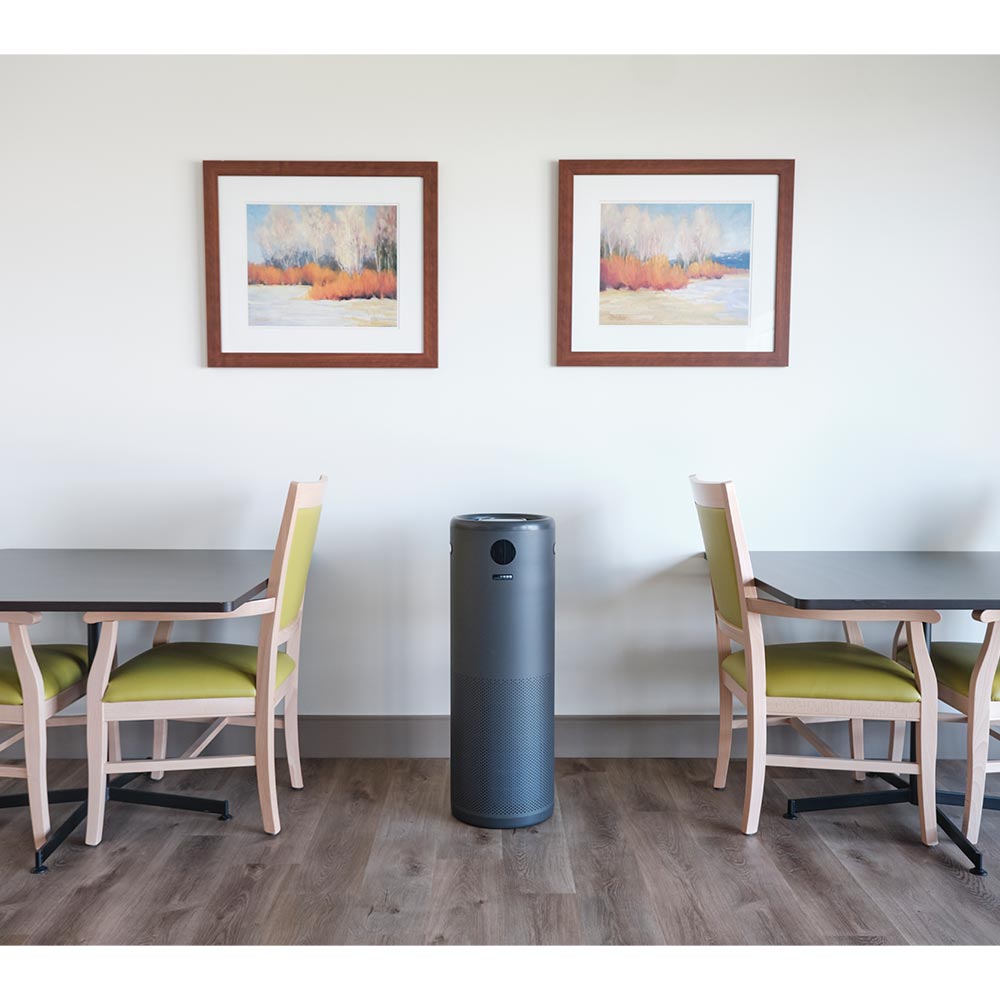What Is In the Air We Breathe?
In this post:
- Visible air contaminants
- What are invisible air contaminants?
- How to protect your indoor air
 Shared from Surgically Clean Air.
Shared from Surgically Clean Air.
What's in the Air We Breathe?
It's free, it’s all around us outdoors and indoors. We can’t live without it for more than a few minutes. But we often take the air we breathe for granted. The air you breathe is made up of lots of things besides oxygen! Oxygen only makes up about 21% of air. About 78% of the air you breathe is made up of other gases such as nitrogen, argon, carbon dioxide, and methane, as well as a host of other things that are not good for your health
Visible Indoor Air Contaminants
When sunlight passes through a window we can see some of the harmful containments in our indoor air, such as dust, dirt, allergens, and even human skin.
- Dust – Expert consultants in contamination control have estimated that people typically inhale more than two tablespoons of particulates per day. In a comprehensive study reported in Occupational Health and Safety (1984), it was found that concentrations of total dust fall into the 20 to 40 micrograms per cubic meter in “tight” buildings. When office workers inhale them, respirable particles are deposited on tracheal and bronchial surfaces.
- Dirt – Inside a basic home your home (1,500 sq feet) about 18 kgs (40 pounds) of airborne dirt is generated per year, that’s about 50 grams (1.8 ozs), or two tablespoons a day.
- Allergens – Pollen and other antigens suspended in indoor air can produce abnormally vigorous immune responses for those that suffer from Asthma and Allergies.
- Human Skin – People shed more skin than just about any other animal. About 80% of what you see floating in a ray of sunshine entering your home is dead human skin.
Surgically Clean Air ONYXsca Air Purifier
Invisible Indoor Air Contaminants
We can only see about 10% of airborne pollutants. The rest are too small to see, but not too small to inhale. These particles that we can’t see contain a wealth of biological particles which could be harmful to our health. The many types of airborne germs include: bacteria, fungi, molds, viruses, and VOCs — these bio-aerosols are all around us and they can be highly detrimental to our health.
- Bacteria – are tiny, one-celled creatures that reproduce outside of the body or within the body as they cause infections. Some infections that bacteria can cause include ear infections, sore throats (tonsillitis or strep throat), cavities, and pneumonia.
- Fungi – are multi-celled plant-like organisms that get their nutrition from plants, people, and animals. They love to live in damp, warm places and can cause rashes and other irritations.
- Molds – mold spores are a common component of household and workplace dust; however, when mold spores are present in large quantities, they can present a health hazard to humans, potentially causing allergic reactions and respiratory problems.
- Viruses – whatever a virus lives in is called its host. Most viruses can’t survive very long if they’re not inside a living thing host (like a person) so to flourish they must spread quickly from one person to the next. To effectively spread most viruses move through the air. Viruses cause chickenpox, measles, flu, and many other diseases.
- VOCs – which are short for volatile organic compounds, are numerous, varied, and ubiquitous. They include both human-made and naturally occurring chemical compounds. Most scents or odors are VOCs, and harmful VOCs can have compounding long-term health effects.
Negative Health Effects of Breathing Poor Indoor Air
Dirty, unhealthy air at home and at work can cause mild irritations such as headaches, sinus congestion, fatigue, nausea, dizziness, eye irritation, coughs, and sore throats. Sadly unhealthy air can also have more dramatic impacts on people:
According to the World Health Organization, over three million premature deaths each year are caused by air pollution.
Poor air quality has long been linked to lung and heart problems, including coronary artery disease, emphysema, respiratory infections, stroke, and cancer. It also is especially dangerous for pregnant women, as it can contribute to birth defects.
Air pollution can also exacerbate numerous conditions, including asthma, chronic obstructive pulmonary disease (COPD), cardiovascular disease, and diabetes. Children and the elderly are especially sensitive to air pollution.
“We now have even more compelling evidence of the strong relationship between air pollution and cardiovascular disease,” Sanjay Rajagopalan, section director of vascular medicine at Ohio State’s Medical Center and co-author of the study, stated in an announcement to the media. “Recent observational studies in humans suggest that within hours to days following exposure, blood pressure increases.”
Surgically Clean Air Jade 2.0 Air Purifier
So what should you do to protect yourself?
Dirt and pollutants can’t always be prevented, but carrying them in your lungs can. So take some control over the air you breathe indoors by reducing the sources of air pollution in your indoor air. Try to avoid the use of chemical cleaners, keep your indoor spaces clean, make sure heat and air conditioning filters are cleaned frequently, and most importantly use high-quality indoor air purifiers that can remove harmful indoor air contaminants.
Surgically Clean Air Purifiers have a sophisticated medical grade 6-stage filtration system that can eliminate the pollutants that cause an unhealthy indoor air environment, and stop the spread of illness and disease from one person to another.
Recent Posts
-
Different Types of Cleaning Products Explained
Whether you're cleaning an office, school, gym, or retail space, understanding cleaning product type …Jun 27, 2025 -
Flat Mop vs Spin Mop: Which One Cleans Best?
When it comes to keeping your facility clean, choosing the right mop can make all the difference. Bo …May 30, 2025 -
Sponge Mop vs. String Mop: Which is Right for Your Facility?
When it comes to keeping floors clean, both sponge mops and string mops are trusted cleaning tools. …May 23, 2025







